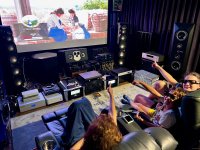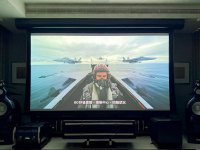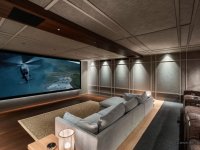http://madshi.net/madVRhdrMeasure54.zip
This one will need some explanations:
1) The new option "adjust threshold 2 strength (in %)" tries to scale the 2nd scene detection algorithm to work better with dark scenes. By using 100%, dark scenes get *MUCH* higher values than before. Bright scenes also get some higher values, but not as much higher as dark scenes. If you use 0%, you get the exact old numbers. Any value in between 0% and 100% will scale linearly. If you use more than 0%, you will have to increase "scene change threshold 2", maybe even by a lot, to make it work properly, because any percentage above 0% increases the numbers overall (but dark scenes more than bright scenes). FYI, the substraction of the previous frame's metric from the current frame (previous known as the "rolling average substraction" feature, which is now always active) hides the fact the metric 2 gets higher numbers, so don't be confused by that.
2) Currently actual scene detection still uses algos 1 and 2 separately, with the separate thresholds. The reason for that is that a simple average of both metrics doesn't make sense if one has much higher values than the other. So first we need to find proper thresholds for both metrics separately, before we can combine them.
3) The histogram now has 3 numbers. The first 2 are the same as always (metrics 1 + 2). The 3rd number is now a *weighted* average. It's weighted like "(metric1 / threshold1 + metric2 / threshold2) / 2 * 10". Or to say it in words: The 3rd number now combines both metrics according to their thresholds, so that both have roughly equal weight. If the 3rd number exceeds 10.0, that's where a combined average metric would signal a scene change. But the 3rd number is not actually used anywhere yet. It just shows what a combined metric would output, using the 2 thresholds (you chose) as weights.
4) You can still disable the 2nd metric by setting "scene change threshold 2" to 0.
5) You can now choose different smooth strengths (iteration counts) for different FALL levels. Also an iteration count of 1 is now acceptable, I modified the smoothing algo accordingly. Using an iteration count of 0 is also perfectly legit, if you prefer that at very low FALL levels. You can go up to 50 iteration levels, IIRC. I doubt using that much smoothing will work well, though. But I'll leave that up to you. |




